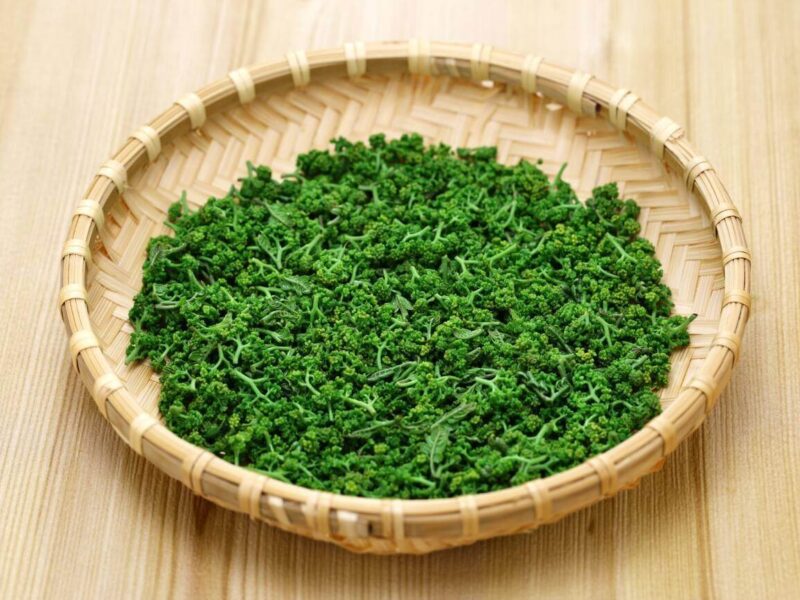Have you ever been excited to try an authentic Japanese recipe only to discover you’re missing one crucial ingredient – Sansho pepper? I know the feeling all too well. Just last week I was looking forward to making eel donburi only to realize at the store that they were out of Sansho. I was bummed, to say the least. But I wasn’t going to let the lack of one spice ruin my ambitious meal plans. That’s when I decided to dig in and research the best alternatives.
After some experimenting in the kitchen and surfing forums online, I found several options that just might fool even the most discerning Japanese foodie. From Japanese spice blends to everyday ingredients you probably already have on hand, I tested a variety of substitutes to see if they could truly replicate the magical flavor combo of tangy, peppery Sansho. Join me as I spill the results of my hunt for the perfect replacement. By the end of this article, you’ll be fully stocked with substitutes to save any recipe from the brink of Sansho-less disaster. Your homemade sushi, eel, soup or whatever else will be just as delicious, I promise.
Best Substitutes for Sansho Pepper
1 Ground Black Pepper and Lemon Zest
My first attempt at a Sansho substitute was also the simplest – ground black pepper and lemon zest. On paper, it seemed like this DIY blend could mimic Sansho’s trademark citrus and heat.
To make it, all you need is a half teaspoon each of ground black pepper and freshly zested lemon peel. I simply mixed the two together in a small bowl until well combined. Then I stirred some into steamed green beans to test the flavor profile.
I have to admit, I was pleasantly surprised. The blended spices delivered just the right balance of spicy warmth from the pepper paired with a refreshing burst of lemon. It wasn’t exactly like Sansho, but it came pretty darn close. The flavors perfectly complemented the green beans.
Since this substitute is so easy to whip up using basic pantry ingredients, it’s definitely my top recommendation when you’re in a pinch. Plus, at about 10 seconds of prep time, it’s hard to beat for convenience. I’ve also found the pepper-zest blend works well as a sansho stand-in for recipes featuring fish, meat or noodles. Your taste buds will thank you!
2. Shichimi Togarashi
Next up in my substitutes testing was the Japanese spice blend Shichimi Togarashi. For those unfamiliar, Shichimi Togarashi is a fragrant, reddish powder comprised of several different dried chilies and seeds. Unlike single-ingredient sansho, its complex flavor profile made it a promising option.
To sample it, I made a batch of rice seasoned with Shichimi Togarashi according to the package instructions. Immediately, the potent aroma of the spices drew me in. Taking a bite, I experienced a nice tingling heat followed by subtle notes of citrus, ginger and sesame.
While it wasn’t identical to Sansho’s taste, Shichimi Togarashi offered a similar sensory experience – that perfect zing of warmth and brightness. As an added bonus, its vivid crimson color made the rice visually appealing too.
I could see why this blend is a go-to in Japanese cuisine. It’s especially well-suited for rice and noodle dishes where a versatile, all-in-one seasoning is ideal. The blend is also readily available in most Asian grocery stores. For replicating sansho in recipes you eat with chopsticks, Shichimi Togarashi is a solid sub.
3. Nanami Togarashi
Another traditional Japanese spice I tested was Nanami Togarashi. Similar to Shichimi Togarashi, Nanami Togarashi contains an array of dried chilies, peppercorns and seeds. However, it has a slightly different flavor profile due to variations in the amounts and types of ingredients used.
To sample Nanami Togarashi, I prepared a bowl of miso soup, adding about half a teaspoon of the blend toward the end of cooking. Swirling it into the soothing broth, I was struck by the blend’s subtle yet complex savoriness.
On the palate, there was an initial peppery burst not too different than Sansho. But Nanami Togarashi layered in more roasted, nutty notes rather than bright citrus. I found its warm, full flavor enhanced the umami bombs that are miso and tofu wonderfully.
While a touch more one-dimensional than lemon zest pairs, Nanami Togarashi is a suitable Sansho swap especially for soup, seafood and meat applications. Its mellow heat shines through heartier dishes. And the slight difference in taste compared to similar blends makes Nanami Togarashi a nice alternative to keep in your arsenal.
4. Lemon Pepper
Growing up, lemon pepper was a staple seasoning in my house that I took for granted. Only as an adult seeking a Sansho sub did I fully appreciate lemon pepper’s potential. Homemade with just lemon zest, black pepper and a pinch of salt, this blend delivered big on flavor.
To sample it, I sprinkled some on top of sautéed shrimp just before serving. The peppery citrus zing instantly awakened my taste buds. But I was most surprised by the blend’s complexity – beneath the bright hit of lemon lay deeper savory-spice notes.
Biting into the shrimp, I tasted a beautiful balance. The pepper played well off the sweet shrimp, while the lemon brightened it up in a very fulfilling way. I could see why lemon pepper is a classic for seafood and white meat recipes.
Admittedly, it didn’t quite match Sansho’s Japanese yin-yang of citrus and heat. But for the effort involved, lemon pepper’s bright flavor carried me away. Plus, I bet its versatility will earn constant use in my non-Japanese recipes too. Overall, this affordable, simple blend gets two thumbs up.
5. Sichuan Pepper
My final substitute test strayed a bit from Japan – Sichuan pepper from Chinese cuisine. Unlike typical peppers, Sichuan pepper is actually the dried berries of prickly ash trees. Still, I was hopeful its unique flavor could satisfy.
To sample it, I made mapo tofu, a classic Sichuan dish that normally calls for the pepper. I substituted about ½ teaspoon of whole Sichuan peppercorns for the sansho. As the tofu simmered with chilies and sauce, an enticing hot-numbing sensation spread over my tongue.
Biting into the soft tofu, I tasted layers of pungency from the Sichuan pepper intermingling with spicy chilies. It created a mouthfeel quite unlike sansho’s tanginess. However, the complex flavor profile intrigued with each bite.
While Sichuan pepper doesn’t replicate sansho outright, it adds an interesting nutritional twist as well as heat. I could see enjoying the subtle numbing effect in braised meats or soups too. Overall, for bringing an unique flair to dishes where sansho is usually called for, Sichuan pepper is worth keeping in your spice rotation. Its taste may grow on you like it did me!
Other Possible Substitutes
While lemon pepper, Japanese spice blends, and Sichuan pepper rose to the top of my sansho substitute testing, a few other options showed promise worth mentioning.
Citrus oils – For their pure lemon or lime essence, citrus oils could work in small amounts added to dishes. Take care as they are highly concentrated.
Citrus vinegar – Rice, cider or other fruit vinegars infused with lemon or lime zest offer bright acidity similar to sansho.
Sumac – This deep red-purple ground berry provides an astringent lemony flavor when sprinkled over foods.
Herbs – Fresh grated ginger, lemon thyme or lemon balm can lend bright flavors, though are less heated than sansho.
Mustard – A small amount of Dijon or whole grain mustard combines heat with citrus notes from wine or vinegar.
Spice blends – Thai seasoning like lemon grass could sub, or make your own blend with pepper, citrus and heat.
Single chilies – For heat plus some lemon tones, try thinly sliced Thai, serrano or jalapeño peppers.
While these alternatives may not perfectly match sansho’s unique flavor, used judiciously they can supplement the substitutes described earlier to suit different recipes. Experimentation is key to finding what works best for you.
FAQs
What exactly is Sansho pepper?
Sansho pepper comes from a prickly ash shrub native to Japan. It has a distinctive flavor combining tangy, lemony citrus with moderate spiciness. The leaves and seeds are used as a seasoning.
Where can I find Sansho pepper?
Sansho pepper may be available at Asian grocery stores, but can be difficult to find depending on location. The substitutes recommended in this article are more widely accessible alternatives.
Which substitute most closely mimics Sansho pepper?
The homemade blend of ground black pepper and lemon zest comes closest to replicating Sansho’s signature flavor profile of citrusy and spicy. Japanese spice mixes like Shichimi Togarashi also offer similar sensory qualities.
How do I use the substitutes?
The substitutes can be used interchangeably with Sansho pepper in recipes. Adjust amounts to taste and sprinkle over dishes right before serving for maximum flavor impact. Always start with less and add more to suit your preference.
Can these substitutes be used for cooking too?
Yes, the substitutes recommended here can be added during the cooking process as well as at the table. Lemon pepper, spice blends and fresh citrus zest mixes especially are suitable for building flavor into braises, soups and other simmered dishes.
Will real Sansho pepper taste very different?
While no substitute will be identical, the recommendations provided aim to captures Sansho’s signature peppery-citrus notes. Of course, using authentic Japanese Sansho will offer the most authentic flavor experience when possible.
Do I need to use fresh or dried substitutes?
Both fresh and dried ingredients work well as substitutes. Dried options like peppers and spice blends offer convenience, while zesting citrus yourself ensures maximum fresh citrus flavor.
Can these substitutes be used for sushi?
Yes, lemon pepper or the black pepper/citrus zest blend make excellent drop-in replacements for sansho on sushi rice or nigiri. Start with a light dusting and taste as you go.
How long will the substitutes keep?
Homemade blends like pepper/zest can be refrigerated in an airtight container for 2-3 weeks. Store-bought spice blends and citrus will last 6 months to a year, while fresh herbs keep 1 week.
Can I double the substitute amounts in recipes?
It’s best to substitute amount for amount at first. You can always add more of the substitute at the table to taste, but doubling could overwhelm other flavors. Go gradually.
Can kids eat the spicy substitutes?
Some spicier ones like pepper blends may be too intense for young kids. Start with milder options like fresh citrus or Dijon mustard. Omit heat altogether for smaller children.
What if I’m allergic to an ingredient like pepper?
Consult the ingredient lists and swap out recommendations with analogous flavors that avoid your allergens. Sumac, citrus vinegar or fresh herb substitutes may work.
Conclusion
By now, you should feel confident using these sansho pepper substitutes to save any recipe from blandness. With a little experimenting, I’m sure you’ll find your new favorite stand-ins. And don’t be afraid to tweak the recommendations to suit your personal tastes.
Going forward, I plan to keep all these substitutes on hand so I’m never left in the lurch without the real deal Sansho pepper. That way, authentic Japanese meals and other global dishes will continue being a regular part of my cooking repertoire.
Whether you’re seeking to replicate sansho without the hunt for specialty ingredients, or simply looking to add some new flavors to your cooking, I hope this guide has provided solutions. Above all, remember to enjoy the process of finding what works best for you. Your taste buds will thank you!
As for me, I think it’s high time I took another stab at that elusive homemade eel donburi recipe. Only this time, I’ll be fully stocked with substitutes to save the day. Wish me luck! Thanks for joining me on this journey – leave a comment to share your favorite sansho pepper substitutes.



